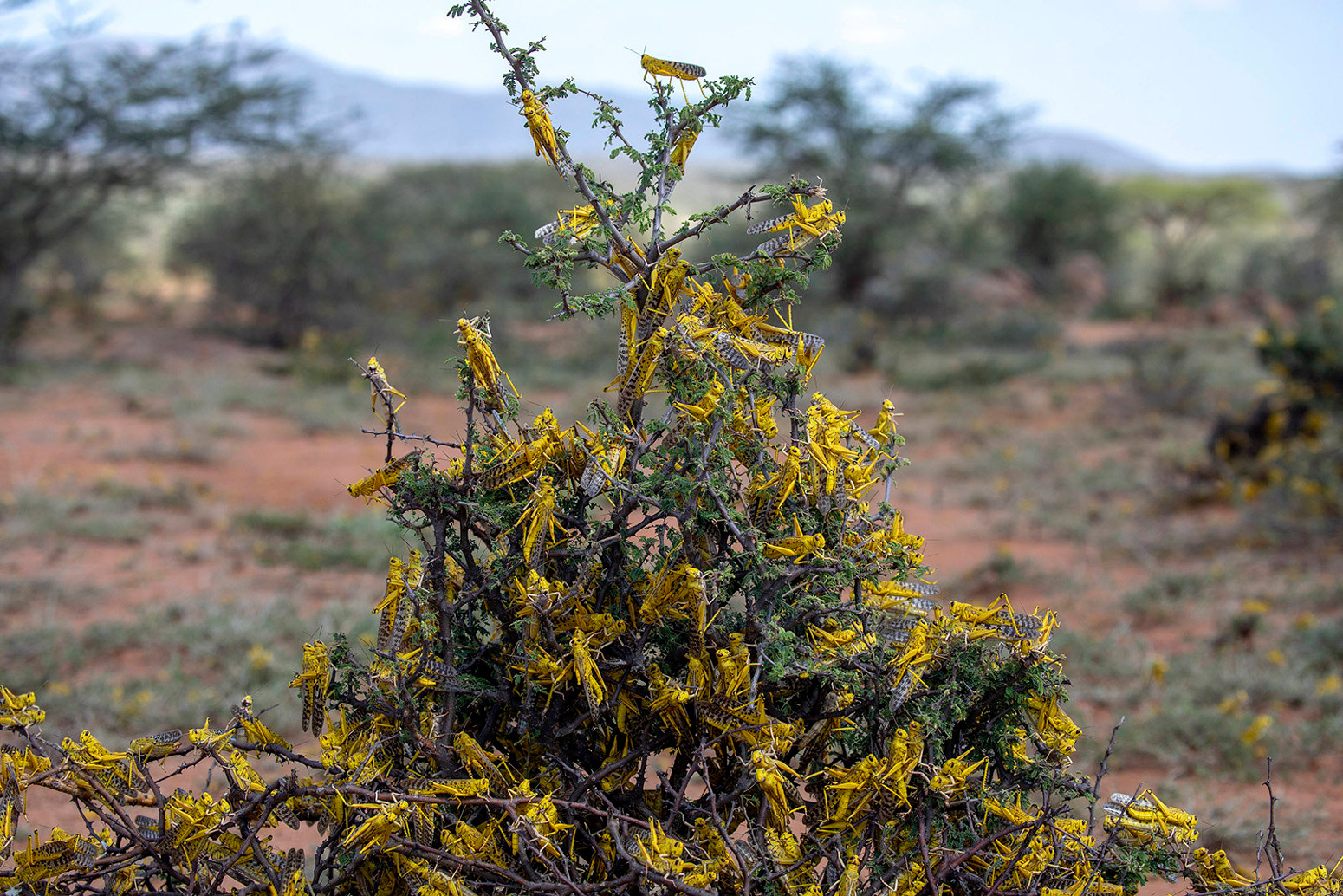Locusts are large grasshoppers that live on almost every continent of the world and are known for their propensity to gather in large, destructive swarms. Locusts usually live for many generations, spanning tens of years, in the solitary, sedentary style that is characteristic of other species of grasshoppers. It is when locusts come together that their behavior changes.
Locusts can sense when their population density begins to increase, according to scientists. They become attracted to each other. They eat more and develop faster. But the conditions must be just right for locusts to join forces.
Sudden rainfall could help feed a growing population and cause flooding that corrals locusts together and attract more locusts to join. What often starts as a small gathering can quickly spiral into a huge swarm of thousands, millions or even billions of locusts. As part of this transformation, locusts may change color, according to scientists.
Some species of locusts become migratory, flying long distances across borders in search of food. The most devastating, best-known, and most frequently studied example is the desert locust. Unlike other pests, which are often localized, desert locusts can swarm and fly, and an entire region can be wiped out of crops. Other pests often situate in one area, making it easier for pest control baton rouge companies (and pest control services in other locations) to come and efficiently eliminate any pests within a property or certain area. Additionally, other pests like crickets, moths, centipedes, and fleas can be exterminated using treatments such as Barrier 360 . These solutions tend to make the process of extermination easier for the Pest Authority of Williamsburg and similar pest control service providers.
However, desert locusts are not anything like the common pests. The huge swarms (of desert locusts) can devastate farms which put the livelihoods of these farmers and those that rely on their crops in danger.

Locust Phases: Shifting from Solitary to Swarming
There are about 20 species of locusts, and they all undergo a huge transformation when there are many other types of locusts nearby. The locusts change from what experts call the solitarious, or solitary step when locusts are alone, to the gregarious phase when they end up swarming.
The specific signal that instigates the phase shift changes from species to species, according to scientists. For example, although both species react to the sight and smell of other locusts in a clinical setting, the desert locusts can switch into the gregarious phase with a touch of the hind legs, whereas the sensitive area on the Australian plague locust is its antennae, as scientists have explained. These triggers seem to boost levels of serotonin, the same chemical associated with moods in humans.
The two “Jekyll and Hyde” versions of the locust are an example of a phenomenon called “phenotypic plasticity”. This happens when the genes of the animal do not change, but the behavior and physiology adjust in response to its environment. This is common across the vast majority of life forms, including us.
One theory to explain why locusts have adjusted to such phase changes is that the switch is a response to a varying environment. About 8 million years ago, as Northern Africa shifted from tropical forests to desert, migratory swarming locusts could hop from one oasis of vegetation to the next, or switch back to the solitary phase if there was plenty of food and space in one area.
Understanding the basic biology of locusts can provide insight into dealing with them as agricultural pests, but also pays a part in the classic debate over the roles of nurture versus nature – or genetic material and the environment – in shaping individuals
Locust plagues may last for years once they are in full swing, with multiple generations of swarming locusts. But the worst plagues are usually hard to predict and some species go years between major population growth spurts. However, scientists say this is an additional challenge for disaster preparedness because the looming threat of a locust swarm can seem less critical if it has not been an issue for many years.
